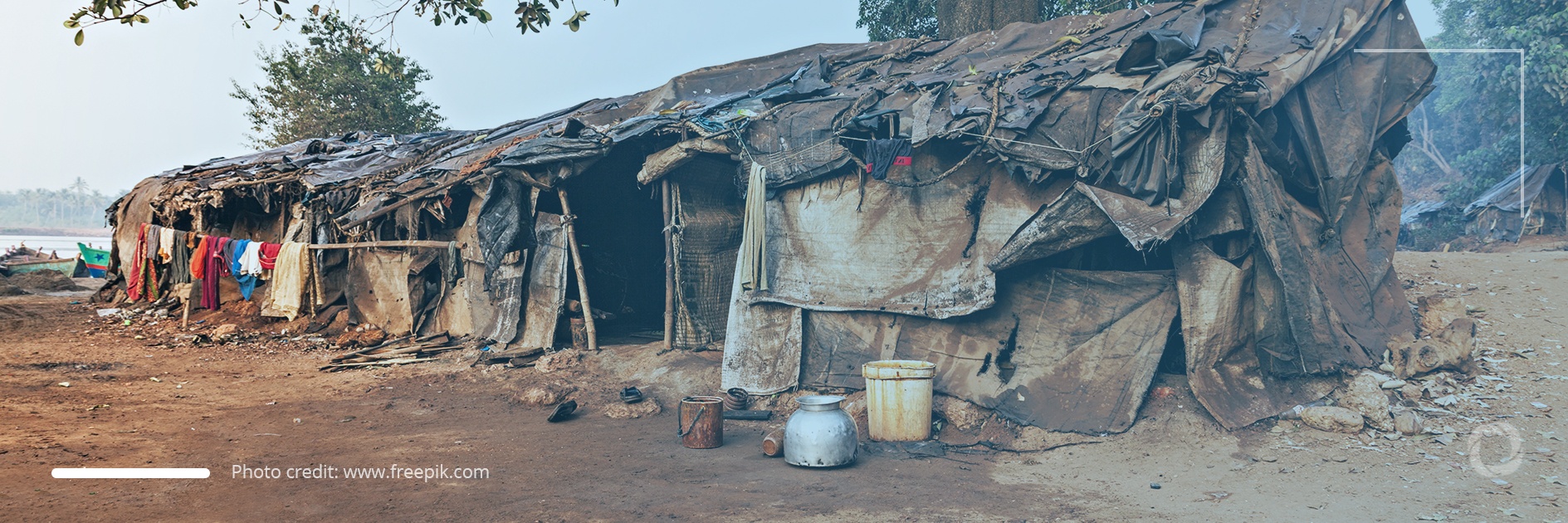By Victoria Butanu
According to the World Bank – one of the largest development aid providers in the world – a person living on less than US$1.90 a day is considered to be in extreme poverty, with nearly one-tenth of the 7.6 billion people worldwide meeting this criterion. At the same time, the Economist estimates that someone escapes extreme poverty every 1.2 seconds, the reasons for which remain to be seen. However, there is an ongoing debate regarding the role of development aid in poverty reduction and its effectiveness in general.
In countries such as China and India, which just a few decades ago had the largest population of those in poverty, the situation has significantly improved, mainly due to people migrating from rural areas to urban industrial centers. At the same time, in other developing countries the poverty rate would have been higher without the existence of aid, according to the research of Feeny and McGillivray of the RMIT University.
The debate regarding the effectiveness of foreign aid has continued for as long as aid itself has been distributed, that is since the mid-20th century, and the academic world is currently thought to be divided into three distinct camps regarding this issue. On opposite sides of the argument, there are those who believe that aid does contribute towards the eradication of poverty while others believe it “perpetuates the cycle of poverty and derails sustainable economic growth”, as author D. Moyo pointed out in Dead aid: Why aid is not working and how there is a better way for Africa. In the middle, there are those who believe that aid can be effective under certain conditions and that its usefulness depends on the method used by donors to allocate it.
How is poverty measured?
The first method of measuring poverty relies on the individual’s standard of living and level of income. According to the World Bank “people are considered as poor if their standard of living falls below the poverty line, that is, the amount of income (or consumption) associated with a minimum acceptable level of nutrition and other necessities of everyday life.”
The second method of measuring the prevalence of poverty is called the human capabilities approach (CA) which is centred on the work of the Noble Prize-winning economist, Amartya Sen. This approach defines poverty as the absence of basic human capabilities to function at a minimally acceptable level within society.
A third, hybrid method to measure poverty uses various data that can be referred to as multidimensional poverty indicators, indices, or composite measures. Examples of these indicators include the United Nations Development Programme’s (UNDP) Human Development Index (HDI) which is a mixed measure of three dimensions of human development, namely:
The broad spectrum of these measures and the subjective nature of some of them demonstrate the difficulty of targeting poverty via development projects.
Aid criticisms
Some of the loudest criticism of aid in general voiced by its opponents is it’s albeit not obvious colonialist character.
“The reason why we cannot help vulnerable communities of the world is that our interventions are more about us, a celebration of who we are and who we think we are. When the west engages with other societies, it sets up an aid relationship which has very little to do with helping others and more to do with disciplining them, reforming them, to become more like us, western capitalists, liberal, democratic states. However, it took Western Europe over 200 years of struggle and violence to achieve state maturity, but a country like Afghanistan has a minute or a decade to accomplish the main task”, says Maliha Chishti, a researcher of war and post-conflict peacebuilding.
Stephen Brown of the School of Political Studies in the University of Ottawa, Canada, in his analysis of aid during the ongoing coronavirus pandemic, notes that:
“a potentially negative trend that COVID-19 has accelerated is the growing place of self-interest in foreign aid justifications. Although enlightened self-interest is quite compatible with positive development outcomes, there is a danger that the self-interest might not remain enlightened and, in fact, become harmful by sacrificing the needs of impoverished people in the name of donors’ own concerns”.
The quest for balance
However, bearing in mind that assistance to the less fortunate is deeply etched in the moral code by which the West and richer countries self-identify, it is clear that not offering any aid at all is not the way forward. Today, authors such as Masako Yonekawa (also the head of field office at UNHCR) urge for a redesign of the aid framework.
“Put those in need of help in the center”, says Yonekawa.
This sentiment is echoed by Maliha Chishti when she says that the West would do better to let the developing countries lead on their own cultural terms.

